Brian D’Arcy, John Deere sales manager
“Component shortages are not as bad as they were but are still challenging. It is getting better but it does depend on what part of the world the components are coming from. We find that microchips and electrical components in general are the worst.
“These issues seem to be going back to three things, a continued shortage of raw materials, staffing issues and logistics in getting the components to where they need to be.
“A lot of suppliers would have turned off the taps during COVID and its simply takes time to ramp production back up in an industry that has very high demand globally right now.
“We too have seen the need for regular price increases based on inflationary pressures from our suppliers just as we all have seen for other everyday goods.
“Longer lead times have also challenged our forecast on the cost of manufacturing but we do give stability to customers where we can price protect orders once placed.
“In terms of our order book, we’ve had a great year and the order book is looking really solid ging forwards.
“Tractors built in Germany have waiting list of roughly six months while the larger horsepower units built in Waterloo in the States face nine months plus waiting time, depending on the specific model.
“I’m confident that 2023 will be another strong year for the industry as todays positive market conditions look set to continue, a sentiment very much reflected by the positive conversations at the FTMTA show here today at Punchestown.”
Rosaire Crowley, Kuhn Centre Ireland
“Business this year has been very good, and I expect the autumn to finish on a reasonably positive note. The big message we would like to tell farmers and contractors is that they need to put orders for new machines in as early as possible. As the Irish importer and distributor of Kuhn, we forecast orders and carry as much new stock as possible. However, it’s becoming more of a challenge. Our lead times ordering the likes of tillage equipment have now gone out as far as 12 months.
“This year, we have seen a huge demand for GPS-controlled fertiliser spreaders. Order times have gone from two months up as far as six months for such units.
“Price continues to be an issue and there are more price increases on the cards, but this is the same with every manufacturer. I think you’ll see lots of manufacturers announcing record turnovers this year, but this will be based on the rising cost of equipment,” she explained. 
Rosaire Crowley.
Thomas Sheedy, Keltec Engineering
“The increased prices of everything across the agricultural sector sent a savage shock through the industry.
“We find that the jump in farm input prices last spring really slowed business for equipment both in Ireland and abroad, but we see that people are now starting to accept it and are trying to carry on. Raw steel that was costing us €1,100/t in 2021 is today costing €1,900/t, while tyres have gone up 25-30% in price, meaning new machine prices have inevitably increased.
Certain component shortages are still quite bad, but the majority have improved. Take gearboxes and cutterbars for the mowers, our Italian supplier has gone from a four-month delivery time to a 14-month delivery time.
“A lot of the world’s componentry is made in Italy and China, two countries that were hit very hard with COVID-19. People panic-buying stock has created a surge in demand, and remember, there’s a fine margin between a feast and a famine.
“In fairness, we have found that the supply of major components such as axles, rams and lights has plateaued. There is a labour shortage across the industry. Speaking to a lot of manufacturers they will all tell you the same thing – it’s hard to find and maintain good skilled labour.”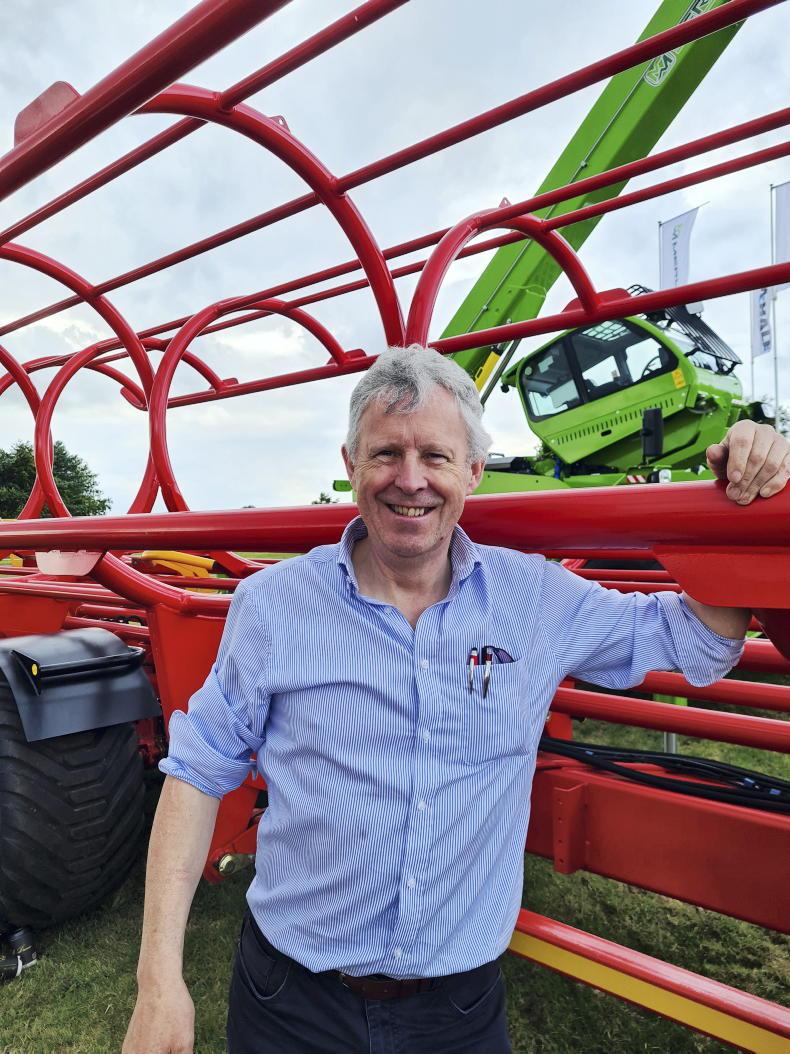
Thomas Sheedy.
Sven Niels, Pöttinger director
sales western Europe and Africa
“The worldwide economy seems to be at a peak, while the supply chains are not fit to carry a second year of such high demand. Typically speaking, supply chains are able to adjust to +/- 3-4%, but now we are in a second year of double-digit growth and suppliers are finding it difficult to meet the demand. We find that the supply of raw materials is becoming a little better, which seems to be on the back of the demand for construction machinery beginning to slow down.
“There is still a lot of uncertainty out there with components, but it has improved. We see suppliers with high energy demands being very cautious with production, such as cast housings for gearboxes. These manufacturers are having trouble setting prices and keeping promises, which is largely driven by the uncertainty around gas. Hydraulics, electronics and gearboxes were the biggest issues for us.
“The widespread labour shortage will be one of the biggest challenges for the industry over the coming years. In my home country of Austria as an example, there are by far less people entering the workplace than the ones who get retried.
“It is difficult to forecast the future regarding price rises. If input prices remain on the level as they are, the cost of new machines won’t go up. However, we thought this last year and prices have gone up significantly since. There is no way out of price rises. Some people are surprised but the cost of labour, energy, transport and componentry has all significantly increased.
Our order book is looking very positive. We manufacture a lot of seasonal equipment but we see demand running as high as it has been in 10 years, with lead times somewhere in the region of around six months. I believe that with the current commodity prices, the demand for new machinery will remain strong.” 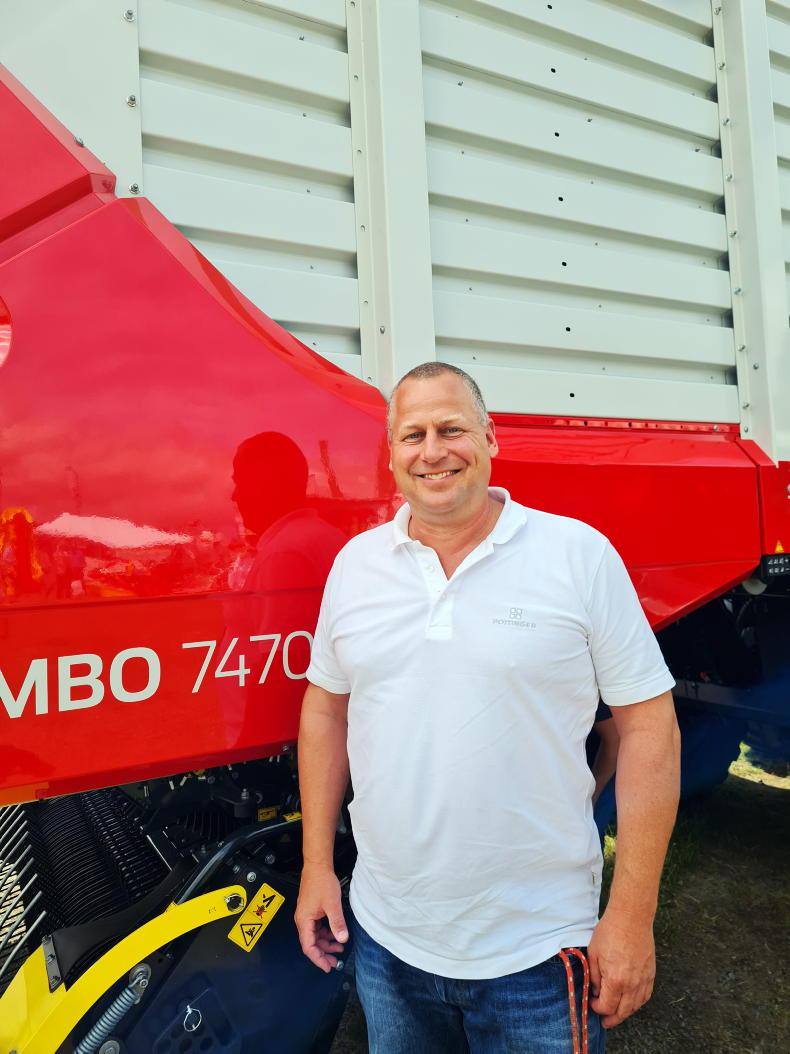
Sven Neils.
Sam Shine, Samco
“The biggest change to our business was the transition to biodegradable film. This follows a European ban on all single-use plastic, while each country has to individually implement it, Ireland choses to.
“We had been working on a biodegradable plastic designed from starch from maize and lactic acid from milk for the past three years for organic growers. This brought about a higher cost but we offset this by tweaking the machine to apply 30% less film on the maize. It has been a massive change in a short space of time.
“We now manufacture 25% of all film at our Adare base using two extruders which run 24/7.
“In general, 90% of our sales take place in a three-month period. We’re a seasonal manufacturer and have always worked seven to nine months ahead of schedule. This really stood to us for the first time over the past few years, and luckily, we rarely faced a shortage of componentry. We always carried a lot of stock parts, and were able to draw from this when certain components ran tight. We see that manufacturers that relied on the Japanese ‘just in time’ system ran into a lot of trouble. That system is gone out the window for now.
“Although production largely wasn’t disrupted, the increased cost of production is the big one. Steel and paint have almost doubled in price, while transport costs have gone off the rails and delivery times have been severely pushed out. Shipping a container from China to Ireland has doubled from six to 12 weeks, while costs have escalated from €3,000 up to €14,000 for a 40ft container.
“I believe that such costs may encourage a return of more localised European manufacturing. On the plastic side of our business, our electricity bill has soared to €175,000/year, up 40%.
Despite the challenges, the demand for new machines is healthy. In terms of the maize machines, our order book is predominantly full for the next two years. The huge jump in transport costs has opened new markets and new areas for us in China, Japan, England and Canada, where farmers are now looking at growing their own high energy feed under film instead of getting it delivered from hours away in trucks.” 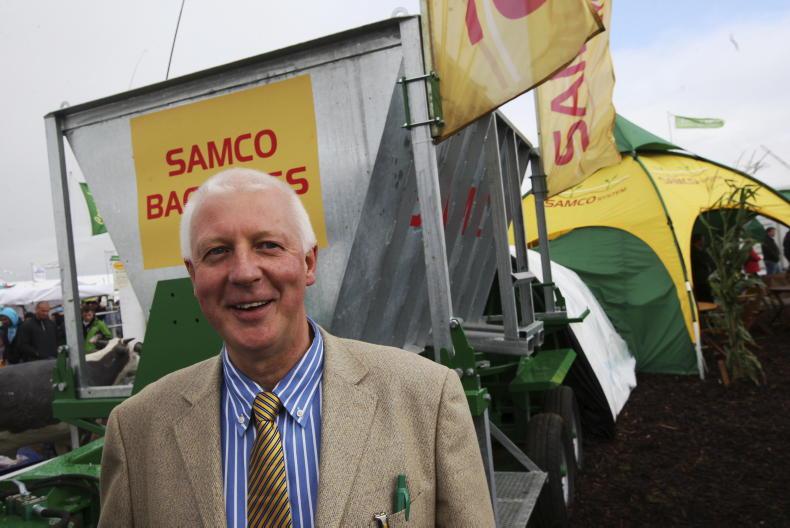
Sam Shine.
Take-home message
The general feeling out there is that componentry is beginning to become slightly less of an issue as it was during and initially post-pandemic. Farmers and contractors are being encouraged to order any new machinery they intend purchasing well in advance of requiring it, with a good chunk of manufacturers still trying to get grass machinery assembled and delivered for the current silage season. Meanwhile, it seems that even more price rises are on the cards. However, the majority of manufacturers we spoke to at the show said that if a price is agreed on, it will be honoured, regardless of further incoming hikes. So, with additional rises likely ahead of the 2023, it will pay to shop around early. 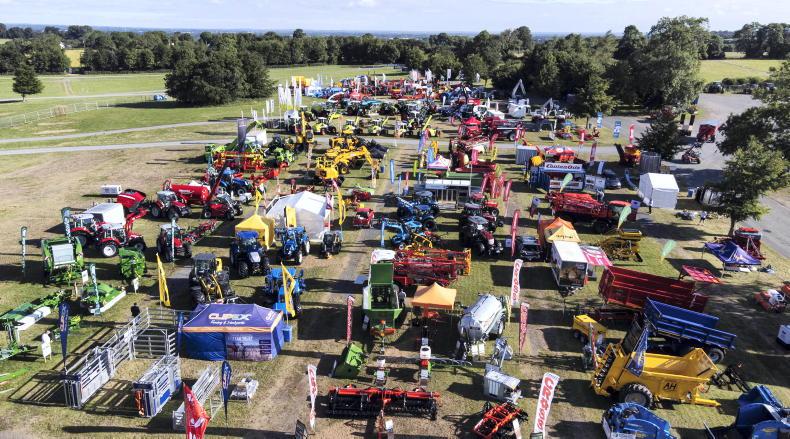
It seems that more price rises are on the cards, while the majority of manufacturers we spoke to at the show said that if a price is agreed on, it will be honoured, regardless of further incoming hikes- so, it will pay to shop around early.
Brian D’Arcy, John Deere sales manager
“Component shortages are not as bad as they were but are still challenging. It is getting better but it does depend on what part of the world the components are coming from. We find that microchips and electrical components in general are the worst.
“These issues seem to be going back to three things, a continued shortage of raw materials, staffing issues and logistics in getting the components to where they need to be.
“A lot of suppliers would have turned off the taps during COVID and its simply takes time to ramp production back up in an industry that has very high demand globally right now.
“We too have seen the need for regular price increases based on inflationary pressures from our suppliers just as we all have seen for other everyday goods.
“Longer lead times have also challenged our forecast on the cost of manufacturing but we do give stability to customers where we can price protect orders once placed.
“In terms of our order book, we’ve had a great year and the order book is looking really solid ging forwards.
“Tractors built in Germany have waiting list of roughly six months while the larger horsepower units built in Waterloo in the States face nine months plus waiting time, depending on the specific model.
“I’m confident that 2023 will be another strong year for the industry as todays positive market conditions look set to continue, a sentiment very much reflected by the positive conversations at the FTMTA show here today at Punchestown.”
Rosaire Crowley, Kuhn Centre Ireland
“Business this year has been very good, and I expect the autumn to finish on a reasonably positive note. The big message we would like to tell farmers and contractors is that they need to put orders for new machines in as early as possible. As the Irish importer and distributor of Kuhn, we forecast orders and carry as much new stock as possible. However, it’s becoming more of a challenge. Our lead times ordering the likes of tillage equipment have now gone out as far as 12 months.
“This year, we have seen a huge demand for GPS-controlled fertiliser spreaders. Order times have gone from two months up as far as six months for such units.
“Price continues to be an issue and there are more price increases on the cards, but this is the same with every manufacturer. I think you’ll see lots of manufacturers announcing record turnovers this year, but this will be based on the rising cost of equipment,” she explained. 
Rosaire Crowley.
Thomas Sheedy, Keltec Engineering
“The increased prices of everything across the agricultural sector sent a savage shock through the industry.
“We find that the jump in farm input prices last spring really slowed business for equipment both in Ireland and abroad, but we see that people are now starting to accept it and are trying to carry on. Raw steel that was costing us €1,100/t in 2021 is today costing €1,900/t, while tyres have gone up 25-30% in price, meaning new machine prices have inevitably increased.
Certain component shortages are still quite bad, but the majority have improved. Take gearboxes and cutterbars for the mowers, our Italian supplier has gone from a four-month delivery time to a 14-month delivery time.
“A lot of the world’s componentry is made in Italy and China, two countries that were hit very hard with COVID-19. People panic-buying stock has created a surge in demand, and remember, there’s a fine margin between a feast and a famine.
“In fairness, we have found that the supply of major components such as axles, rams and lights has plateaued. There is a labour shortage across the industry. Speaking to a lot of manufacturers they will all tell you the same thing – it’s hard to find and maintain good skilled labour.”
Thomas Sheedy.
Sven Niels, Pöttinger director
sales western Europe and Africa
“The worldwide economy seems to be at a peak, while the supply chains are not fit to carry a second year of such high demand. Typically speaking, supply chains are able to adjust to +/- 3-4%, but now we are in a second year of double-digit growth and suppliers are finding it difficult to meet the demand. We find that the supply of raw materials is becoming a little better, which seems to be on the back of the demand for construction machinery beginning to slow down.
“There is still a lot of uncertainty out there with components, but it has improved. We see suppliers with high energy demands being very cautious with production, such as cast housings for gearboxes. These manufacturers are having trouble setting prices and keeping promises, which is largely driven by the uncertainty around gas. Hydraulics, electronics and gearboxes were the biggest issues for us.
“The widespread labour shortage will be one of the biggest challenges for the industry over the coming years. In my home country of Austria as an example, there are by far less people entering the workplace than the ones who get retried.
“It is difficult to forecast the future regarding price rises. If input prices remain on the level as they are, the cost of new machines won’t go up. However, we thought this last year and prices have gone up significantly since. There is no way out of price rises. Some people are surprised but the cost of labour, energy, transport and componentry has all significantly increased.
Our order book is looking very positive. We manufacture a lot of seasonal equipment but we see demand running as high as it has been in 10 years, with lead times somewhere in the region of around six months. I believe that with the current commodity prices, the demand for new machinery will remain strong.” 
Sven Neils.
Sam Shine, Samco
“The biggest change to our business was the transition to biodegradable film. This follows a European ban on all single-use plastic, while each country has to individually implement it, Ireland choses to.
“We had been working on a biodegradable plastic designed from starch from maize and lactic acid from milk for the past three years for organic growers. This brought about a higher cost but we offset this by tweaking the machine to apply 30% less film on the maize. It has been a massive change in a short space of time.
“We now manufacture 25% of all film at our Adare base using two extruders which run 24/7.
“In general, 90% of our sales take place in a three-month period. We’re a seasonal manufacturer and have always worked seven to nine months ahead of schedule. This really stood to us for the first time over the past few years, and luckily, we rarely faced a shortage of componentry. We always carried a lot of stock parts, and were able to draw from this when certain components ran tight. We see that manufacturers that relied on the Japanese ‘just in time’ system ran into a lot of trouble. That system is gone out the window for now.
“Although production largely wasn’t disrupted, the increased cost of production is the big one. Steel and paint have almost doubled in price, while transport costs have gone off the rails and delivery times have been severely pushed out. Shipping a container from China to Ireland has doubled from six to 12 weeks, while costs have escalated from €3,000 up to €14,000 for a 40ft container.
“I believe that such costs may encourage a return of more localised European manufacturing. On the plastic side of our business, our electricity bill has soared to €175,000/year, up 40%.
Despite the challenges, the demand for new machines is healthy. In terms of the maize machines, our order book is predominantly full for the next two years. The huge jump in transport costs has opened new markets and new areas for us in China, Japan, England and Canada, where farmers are now looking at growing their own high energy feed under film instead of getting it delivered from hours away in trucks.” 
Sam Shine.
Take-home message
The general feeling out there is that componentry is beginning to become slightly less of an issue as it was during and initially post-pandemic. Farmers and contractors are being encouraged to order any new machinery they intend purchasing well in advance of requiring it, with a good chunk of manufacturers still trying to get grass machinery assembled and delivered for the current silage season. Meanwhile, it seems that even more price rises are on the cards. However, the majority of manufacturers we spoke to at the show said that if a price is agreed on, it will be honoured, regardless of further incoming hikes. So, with additional rises likely ahead of the 2023, it will pay to shop around early. 
It seems that more price rises are on the cards, while the majority of manufacturers we spoke to at the show said that if a price is agreed on, it will be honoured, regardless of further incoming hikes- so, it will pay to shop around early.
















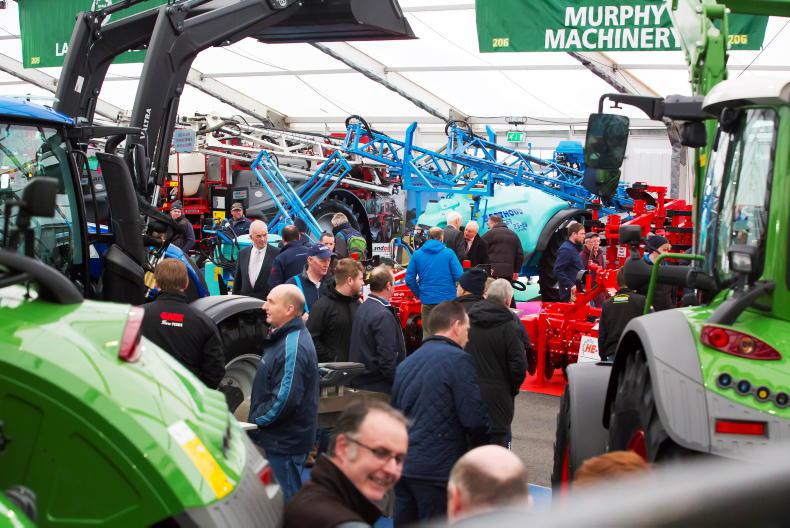




SHARING OPTIONS